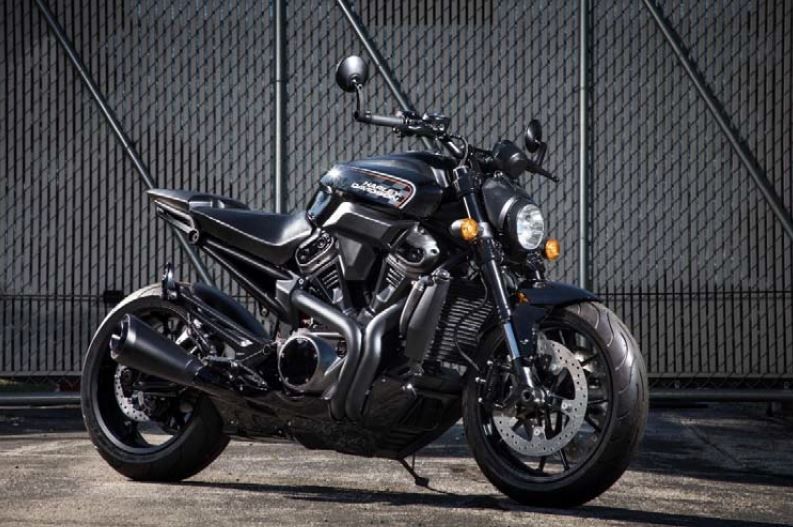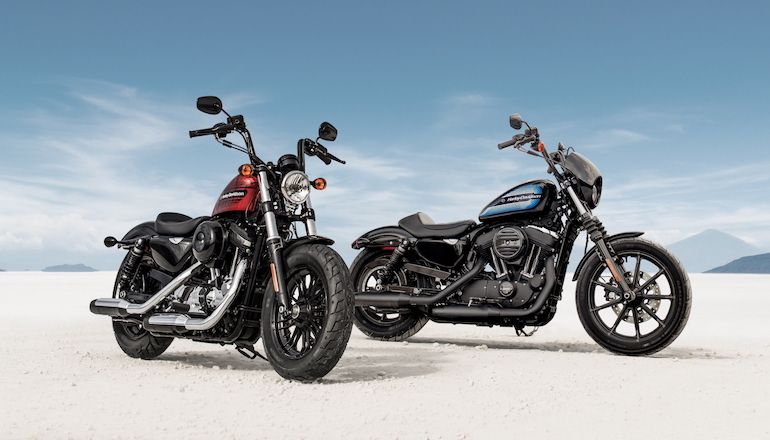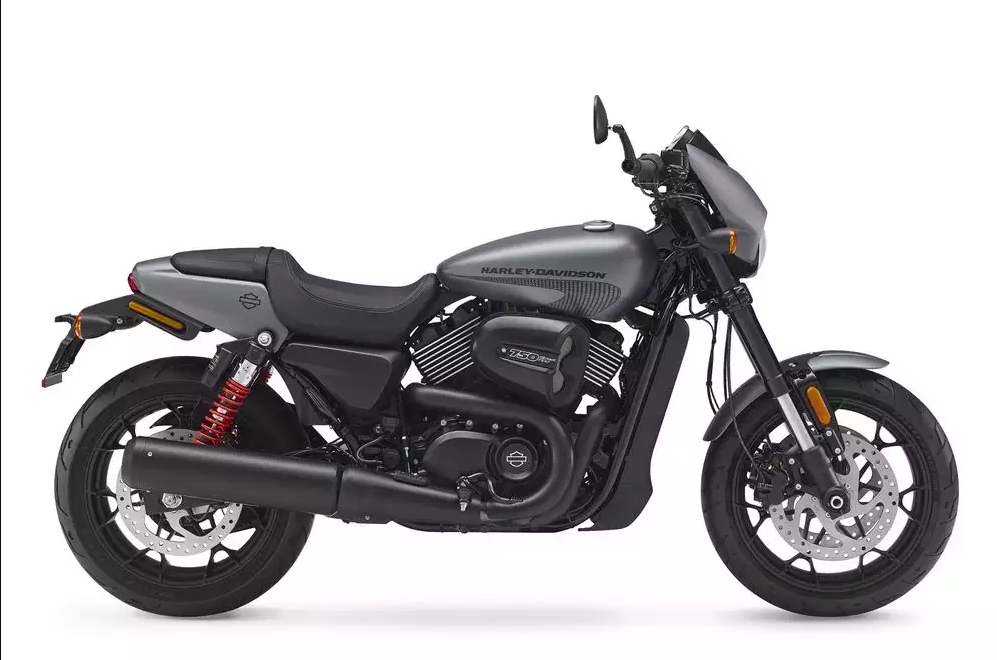What Harley’s Doing Differently: Unpacking Yesterday’s Monumental Press Release
Los Angeles, California, United States
What Harley’s Doing Differently: Unpacking Yesterday’s Monumental Press Release

Harley's upcoming 2020 Streetfighter
Yesterday we got some big news from Harley-Davidson which revealed a number of new concept bikes in segments not typically associated with the Moco. Despite the fancy prototypes, it’s hard not to think, “Wait, hasn’t Harley already done this? (Does the name ‘Buell’ ring a bell?) So let’s dissect the news out of Milwaukee and explore what Harley is doing differently this time, and what aspects are simply more of the same.
The Buell Factor
A decade after the marque’s inception in ’83, Harley-Davidson purchased a 49 percent stake in the Buell Motorcycle Company. A decade later Harley bought out the rest of Buell, at which point the subsidiary began churning out a wide variety of models in segments previously largely untapped by the iconic American manufacturer.
Though they were all powered by Harley mills, the Buell range boasted a myriad of sporty, naked models, and even an ADV(ish) mount, granted it was a bit of an oddity. So in one regard, the news of a Harley-Davidson adventure bike and a street fighter aren’t really novel, albeit there are major differences in the approach and motivations behind the machines announced yesterday.

Buell's strange ADV-esque model
With Buell, Harley found a way to sell motorcycles outside of its traditional cruiser segment, without jeopardizing the brand. The downside to this however is that Buell was unable to leverage the weight of Harley-Davidson’s iconic brand and name (and dedicated customer base!). Instead of distancing itself from these new, traditionally non-Harley offerings like it did with Buell, H-D is wholly standing behind its new wares and proudly slapping its name on the tanks.
Harley Street Fighter, Round Two
The images of what Harley is just calling the “2020 StreetFighter” show a lot of promise. Instead of utilizing existing parts, the V-Twin-powered naked boasts what appears to be a bespoke frame (assumably designed specifically for this project) and a swing arm paired with a monoshock. The proto’s aggressive stance and the presence of Brembo braking hardware also seem to suggest a genuine sport platform.

The sporty, 2020 Streetfighter
Aesthetically speaking, the 2020 StreetFighter is shod in unmistakably sporty bodywork, including a knee-dented tank, suspended tail-section, and a sleek little belly-pan. Despite boasting a markedly more aggressive design than any of Harley’s other existing offerings, the StreetFighter’s visual theme is still inline with Harley’s distinctive, muscular styling.
A Series of Unfortunate Events
While the company has thus far existed almost entirely off of selling big-bore cruisers (not including the outlier offerings like the Topper scooter), it’s become increasingly clear that a major change is needed if the brand is going to survive in the longterm. Harley’s longtime business model of selling expensive cruisers to the American market is no longer viable in its current form. It seemingly took several years of hardship for Harley to accept the reality of this situation, as almost every move the company has made in the last year or so has demonstrated an obvious unwillingness or inability to change.

H-D's lackluster Iron 1200 and Forty Eight Special Sportsters
A perfect example of this was the release of the Iron 1200 and Forty Eight Special. While the pair of Sportsters were touted as a new models, it was blatant that these were nothing more than existing wares dressed up in retro liveries with a few “custom” bolt-on parts that were already available in Harley’s massive parts and accessories catalogue. When things aren’t working, doing more of the same is seldom the answer.
Another example was in 2017 when Harley launched the Street Rod, a smaller, more nimble scoot that the company tried to market as “sporty”. Unfortunately, Harley failed to deviate much from its typical MO, resulting in something of a half-measure of a model. The use of dual rear suspension and a cruiser-style fuel-cell are good examples of how the Street Rod was just more of the same. Calling the foot-pegs on the Street Rod “rear-sets”, does not a sportbike make. The Street Rod’s problems were further exacerbated by the fact it had a generally cheap and plasticky feel to it, clashing with the typically top-shelf nature of the brand.

The 2017 Street Rod
A Decided Lack Of Commitment
Harley’s previous foray into the ADV segment was little more than an existing model that was equipped with a few off-road-oriented bits like long-travel suspenders (are you noticing a theme here yet?). Like the Street Rod, the Buell Ulysses (introduced in 2005) suffered from a lack of commitment. Instead of developing an ADV mount, the company just modified what it already had laying around. What was supposed to be an ADV/sport hybrid ending up being a machine that fell short in both categories. The fact Buell openly stated that the bike was intended for “90 percent on-road use and 10 percent off-road” is pretty telling, as is the fact the Ulysses didn’t come with a spark arrestor.

The H-D Pan America ADV mount
This time however it appears Harley is putting the hammer down and going all in on an ADV model. While details are scant at the moment, the pictures of the Pan America appear to show a model that’s been purpose built from the ground up (not including the engine). Harley has clearly taken a page out of BMW, KTM, and Triumph’s playbook too, taking advantage of trends already established in the segment.
A Shift To Electric
We’ve been hearing about the LiveWire project for half-a-decade now, so its inclusion in yesterday’s announcement isn’t all that noteworthy, however the same can’t be said for the _other _electric prototypes that were shown off. Back in March news broke that Harley-Davidson had invested in Alta Motors. With the release of the LiveWire less than a year off, it would be fair to assume the Moco had called on the Bay Area-based eBike purveyor to assist in the development its inaugural electric model. In a recent email from Alta however, a representative stated “it should be noted that Alta's work with Harley is entirely separate from the LiveWire project”.

Harley's Flat Track-inspired EV concept
Yesterday’s press release also explained that the LiveWire is just the first of several “no-clutch, twist and go” electric models from H-D, as well as mentioning the company is developing a “more accessible” offering for emerging markets. This seemingly confirms Harley’s intentions of producing entry-level models, which is novel territory for the brand. I personally think the idea of dressing up an electric bike in flat track digs is a fantastic way to maintain a strong connection to the brand while simultaneously introducing an objectively novel product.
Tapping Into New Markets
As emerging markets continue to account for an increasingly growing percentage of global motorcycle sales, it’s become harder and harder for Harley to neglect said markets. At present, H-D’s smallest and least expensive model has a half-liter displacement and a price tag exceeding $6K, making it a less-than-popular choice in regions like India where economical offerings are king. Harley’s solution appears to be one or more lightweight electrics.
Part of Harley’s new longterm business plan is to, like Yamaha or Honda, sell a variety of genres of motorcycle. The company’s press release stated; “Additional models to broaden coverage in these product spaces (ADV, naked, electric, etc) will follow through 2022”. The company’s plans to expand into new markets and segments doesn’t mean it will be abandoning its longtime bread and butter; cruisers. In fact, some of H-D’s upcoming offerings will almost certainly benefit from the company’s knowledge and experience in the touring segment.

The
Speaking of H-D’s bread and butter, yesterday’s announcement also included a prototype of a “custom model” that is visually similar to the latest Fat Bob, only with an even sleeker, more bespoke-looking appearance, complete with what resembles a super-low-profile, flat track-esque tail. It seems like people have been clamoring for this type of model for a few years now, and while I think Harley is leaving money on the table by not introducing a road-going, flat-track-inspired model, this is at least a step in the right direction.
Over the last 12 months I’ve written more than a dozen articles on Harley’s happenings, and until yesterday it was all more of the same. While it’s unclear as to how Harley’s dealer network will feel about the bikes they’ll be selling in two year’s time (I doubt most H-Dealership owners got into the business to sell ADV bikes, nakeds, and electrics), it’s undeniable that this was the kind of fundamental shift that Harley’s needed to make for a long time.
You must be logged in to comment
Login now